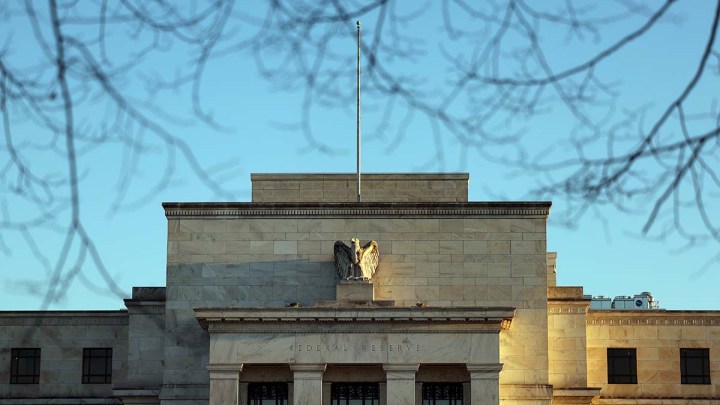
Why some countries’ central banks follow the Fed’s lead

The Bank of England announced Thursday that it raised interest rates by a quarter of a percentage point, just like the Federal Reserve did Wednesday. In fact, the Fed coordinates with other central banks around the globe — especially in times of economic stress, like now. How does it do this, and why?
There are different levels of global central bank coordination. When everything is hunky-dory, the world’s central bankers just keep in touch.
“In normal times, there’s lots of ordinary information sharing,” said David Wilcox of the Peterson Institute for International Economics and Bloomberg Economics.
But these, of course, are not normal economic times. “When financial markets are more turbulent, there’s a second level of coordination, and that involves these swap lines,” Wilcox said.
Swap lines are how the U.S. exchanges dollars for other countries’ currencies. At the beginning of this week, the Fed said it would hold these swaps every day instead of weekly.
When financial stress increases, people turn to dollars, said Ann Owen, a former Fed economist who’s now at Hamilton College.
And the Fed wants to be sure there is plenty to go around because “people are very, very anxious about the possibility that there could be more bank runs if people believe that banks are not able to meet their short-term obligations,” she said.
During the 2008 financial crisis, the Fed went to level three: coordinating interest rates with other countries. The Fed does all this because, in a global economy, it can’t meet its goals of low inflation and maximum employment alone.
“It really benefits the Fed if trade flows aren’t interrupted and if other countries don’t experience financial stability issues,” said Robert Sockin, another former Fed economist now at Citigroup. “Because those have a high risk of coming back and hitting the U.S. economy.”
Ideally, Sockin said, the outcome of this coordination is avoiding financial drama so that all the central bankers can do their jobs.
There’s a lot happening in the world. Through it all, Marketplace is here for you.
You rely on Marketplace to break down the world’s events and tell you how it affects you in a fact-based, approachable way. We rely on your financial support to keep making that possible.
Your donation today powers the independent journalism that you rely on. For just $5/month, you can help sustain Marketplace so we can keep reporting on the things that matter to you.

















